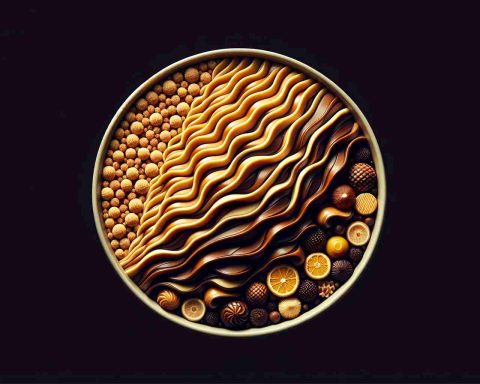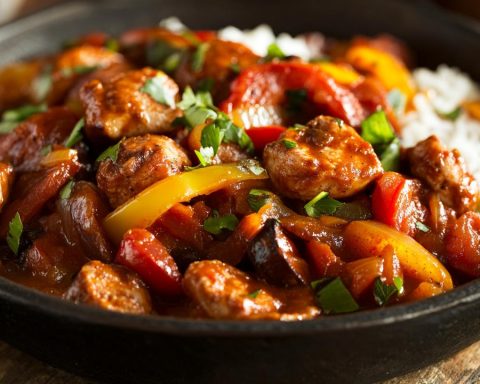Zurek: A Traditional Polish Rye Soup
Zurek, also known as Zurek or Żurek, is a traditional Polish soup made from soured rye flour (zakwas) and served with white sausage and eggs. Often enjoyed during Easter, this comforting soup boasts a tangy flavor profile and hearty ingredients that make it a beloved dish in Polish cuisine.
Ingredients:
- 2 cups rye flour
- 4 cups water
- 5 cups chicken or vegetable broth
- 2 cups chopped white sausage (biała kiełbasa)
- 2 cloves garlic, minced
- 1 medium onion, finely chopped
- 2 bay leaves
- 6-8 peppercorns
- 1 cup sour cream
- 4 hard-boiled eggs, halved
- 2 tablespoons horseradish (optional)
- Salt and pepper, to taste
- Chopped fresh dill or parsley, for garnish
Instructions:
- ###Prepare the sour rye starter (zakwas)###: In a medium bowl, mix the rye flour and water until well combined. Cover the bowl with a cloth and let it ferment at room temperature for 3-5 days, stirring daily. The mixture should develop a tangy scent.
- ###Cook the sausage###: In a large pot, bring the chicken or vegetable broth to a boil. Add the white sausage and cook for about 15-20 minutes until fully cooked. Remove the sausage and set it aside, keeping the broth in the pot.
- ###Make the soup base###: In the same pot, add the minced garlic and chopped onion to the broth. Stir in the bay leaves and peppercorns. Simmer for about 10 minutes until the onions are soft and fragrant.
- ###Add the sour starter###: Slowly pour the prepared zakwas (sour rye starter) into the pot, stirring continuously to incorporate. Bring the soup to a gentle boil, then reduce the heat and let it simmer for another 15 minutes. Season with salt and pepper to taste.
- ###Finish the soup###: Stir in the cooked sausage, sour cream, and horseradish (if using). Allow the soup to heat through, but do not let it boil once the sour cream is added to avoid curdling.
- ###Serve###: Ladle the soup into bowls and add half an egg to each bowl. Garnish with chopped fresh dill or parsley.
Enjoy this delicious and traditional Polsih soup which can be both a comforting winter meal or an authentic Polish culinary experience during festive times like Easter!








